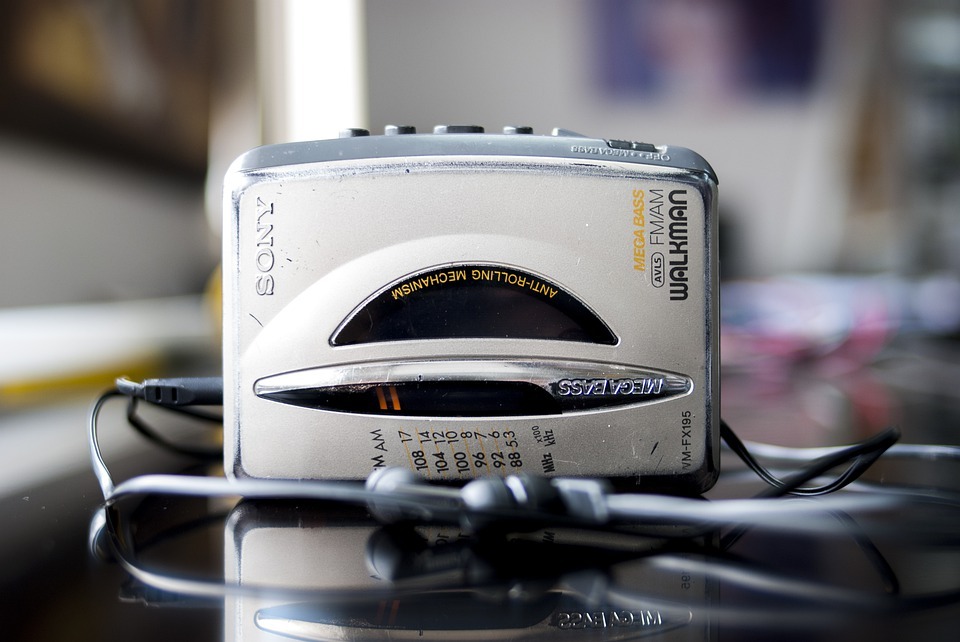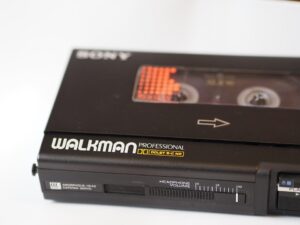Today, people can listen to music easily as songs can be downloaded or streamed online. It means that you can play your favorite songs and albums on different devices that you have, such as your smartphone, tablet, and laptop. But it wasn’t always like this, because before, people would need to carry around personal cases of cassette tapes or CDs in order to listen to their favorite bands and musicians. Portable music did not actually exist in any mainstream fashion until the Sony Walkman was introduced.
Walkman is one of the most popular brands of portable media players, and it is manufactured by Sony. It wasn’t the first-ever portable music player that was released in the market, but it was the one that captured many people’s attention. With this player, folks in the 1980s discovered that they do not have to just listen to their favorite albums at home, as they can take them anywhere.
With the advancement of technology, the Sony Walkman today has also adapted to the change of pace that society demands. The latest Walkman series has high-tech features such as being Wi-Fi capable, allowing you to stream music using different services like Spotify.
In honor of the pop culture tech icon, the Sony Walkman, let us take a look at what it was back when it was just starting out and how it became so iconic.
The History of Sony Walkman
It was in 1963 when the compact cassette was developed by the Dutch electronics firm Philips. The introduction of pre-recorded compact cassettes in the late 1960s made it possible to listen to music on portable devices, even on car stereos. However, gramophone records still remained the most popular format for home listening.
The co-founder of Sony, Masaru Ibuka, used Sony’s bulky cassette recorder TC-D5 to listen to music while traveling for business. With this, he asked the executive deputy president of Sony, Norio Ohga, to design a playback-only stereo version optimized for headphone use. The first prototype of this was created from a modified Sony Pressman. It is a compact cassette recorder designed for journalists, which was released in 1977.
On July 1, 1979, the metal-cased blue-and-silver Walkman TPS-L2 went on sale in Japan. It was the first low-cost personal stereo that was sold for around ¥33,000 or $150. Sony predicted that it would only sell around 5,000 units a month, but it sold over 30,000 units in the first two months since it was released.
The very first Walkman was followed by a series of international releases. It was also sold under several names, including Soundabout in the United States, Stowaway in the United Kingdom, and Freestyle in Australia. Walkman eventually caught on globally in the early 1980s, and Sony used the name worldwide. In June 1980, the TPS-L2 was introduced in the United States.
The 1980s was a decade of intensive development for the Walkman lineup. Sony released the second Walkman model in 1981, which is the WM-2. It is a significantly smaller unit compared to the previous ones. It features inverse mounting of the power-operated magnetic head and soft-touch buttons. In 1982, the first Walkman with the Dolby noise-reduction system was introduced. Then, in 1983, the first ultra-compact cassette-size Walkman was introduced. In 1984, the first Walkman with auto-reverse was released. Sony then presented the first model outfitted with remote control in 1986.
Ten years after the launch of the first-ever Walkman, Sony manufactured more than 50 million Walkmans. In 1992, 100 million units of Walkman were made, and 150 million in 1995. And after 20 years of the introduction of the first model, Sony was able to sell 186 million cassette Walkmans.
After many years, cassette Walkman declined when portable compact disc players were introduced. With this, it was discontinued in Japan in 2010. The last cassette-based model available in the United States was the WM-FX 290W.
The Impact of Sony Walkman
According to Time Magazine, Sony Walkman’s unprecedented combination of portability and privacy made it the ideal product for a lot of consumers who are searching for a compact portable stereo that they can bring anywhere.
Sony Walkman had a major influence on the 1980s culture. In fact, the word “Walkman” entered the Oxford English Dictionary in 1986. Millions of people used Sony Walkman during exercise, matching with the start of the aerobics craze. The popularity of the Walkman increased by 30% between 1987 and 1997. There are also other firms that produced similar products, including Toshiba, Panasonic, and Aiwa. In 1983, cassettes outsold vinyl for the first time.
In German-speaking countries, the use of the term “Walkman” became generic, which means a personal stereo of any make. In fact, in 2002, the Austrian Supreme Court of Justice ruled that Sony could not prevent others from using the term to describe similar goods.
It’s amazing to know that before the iPod and other high-tech devices we have today to stream and listen to our favorite songs, there was Sony Walkman. It was the one that set the trend of making music with you anywhere you go.


